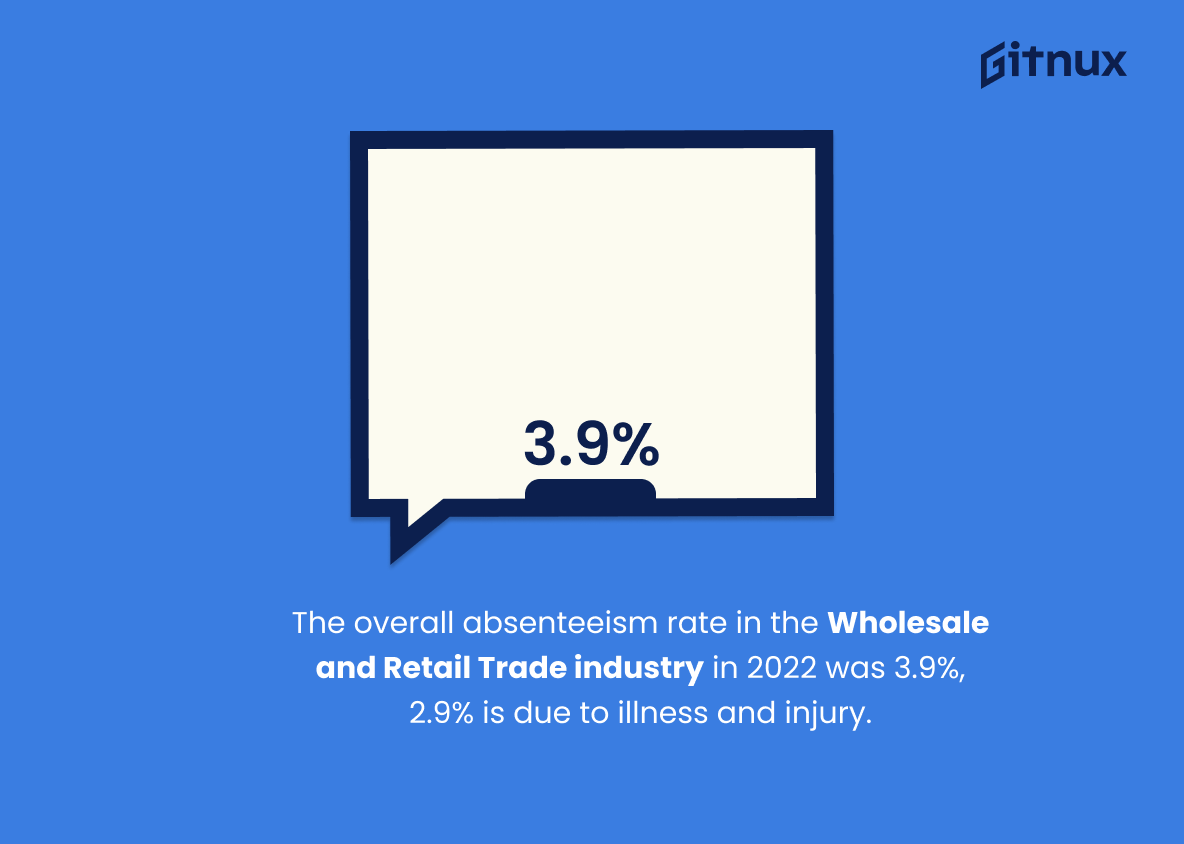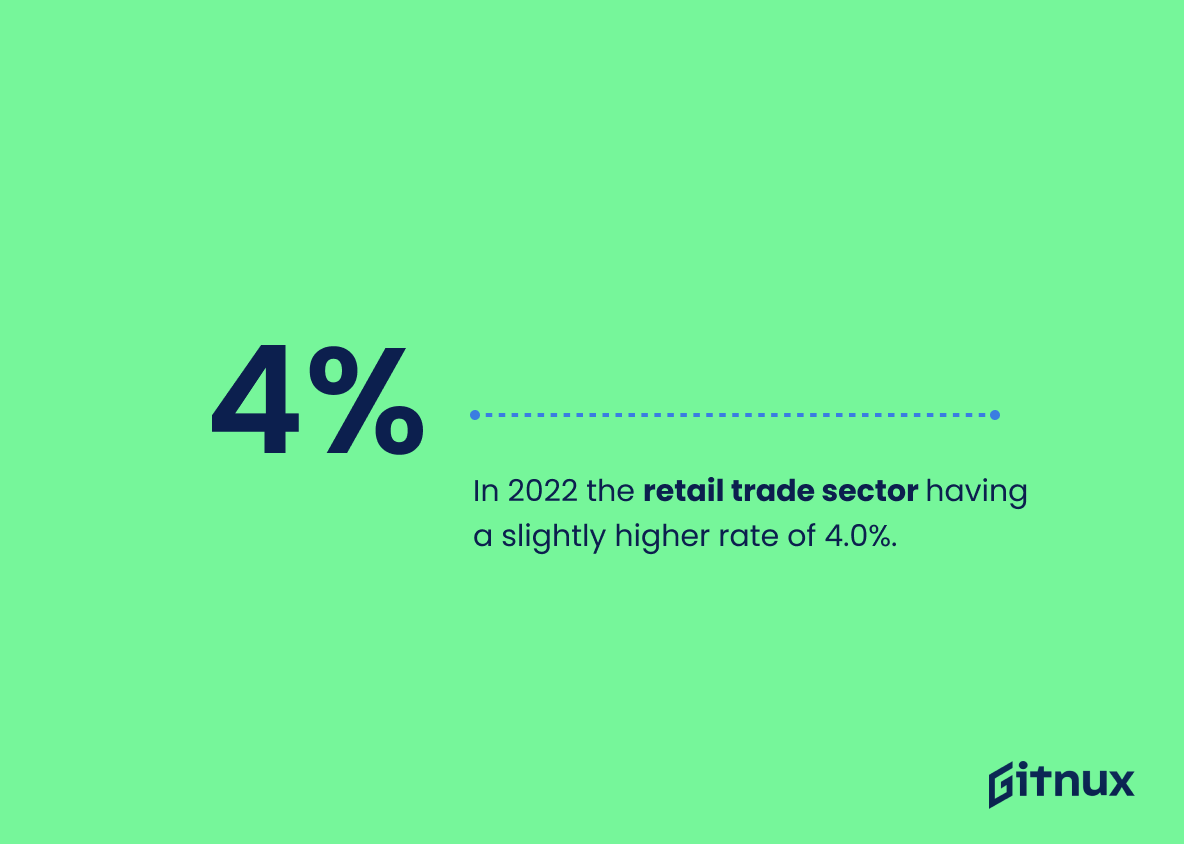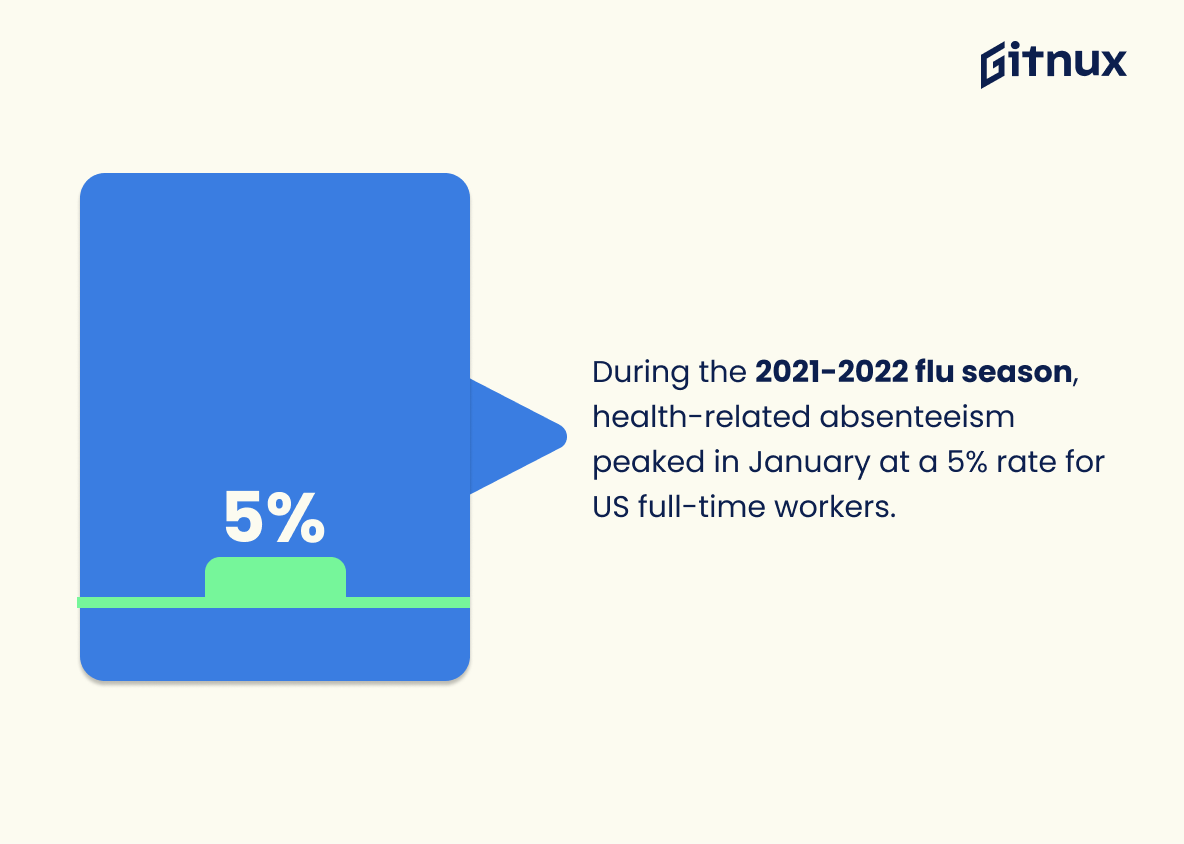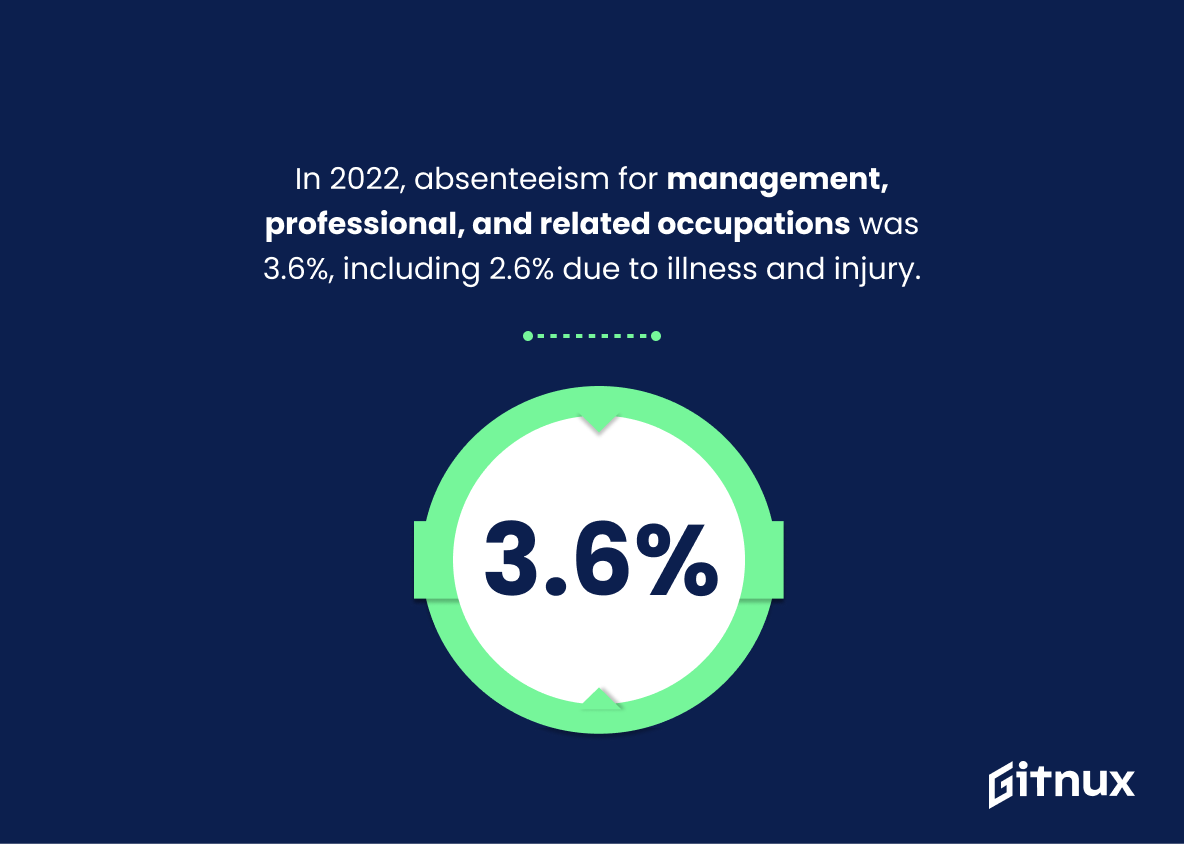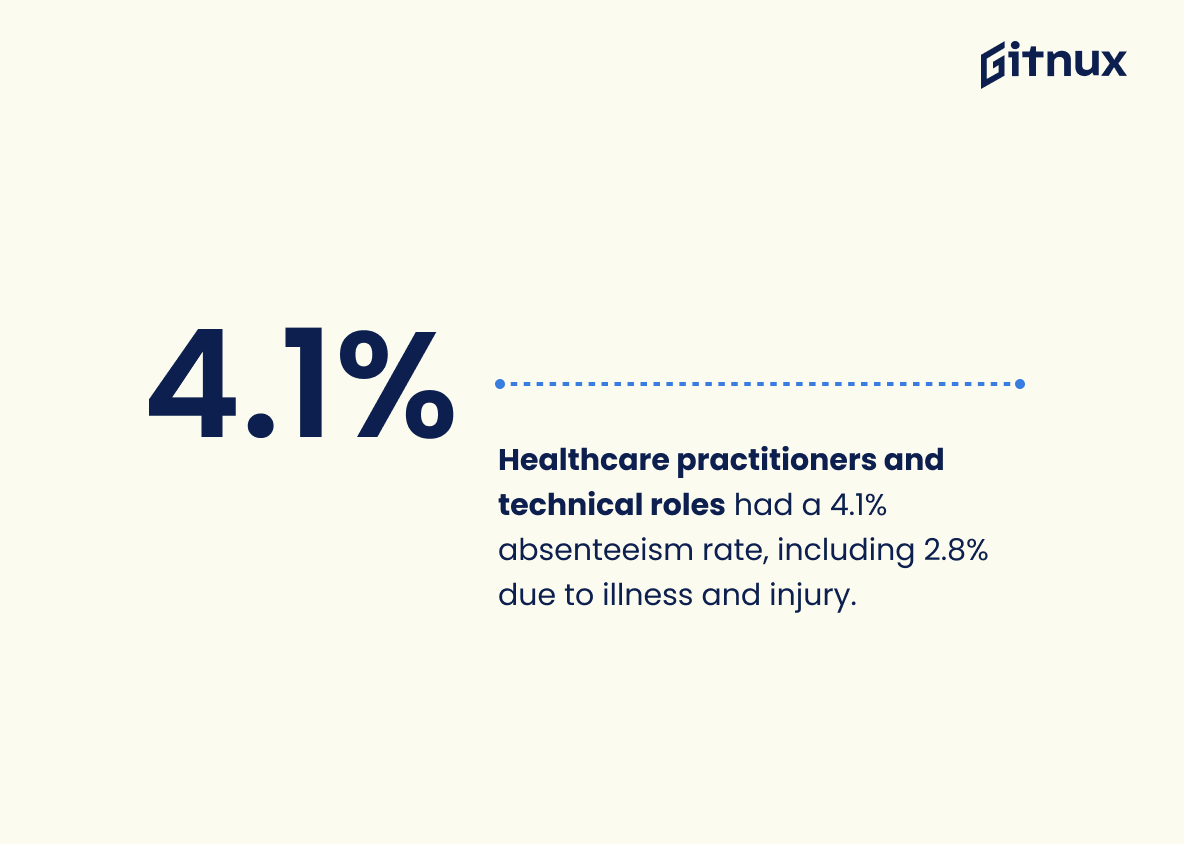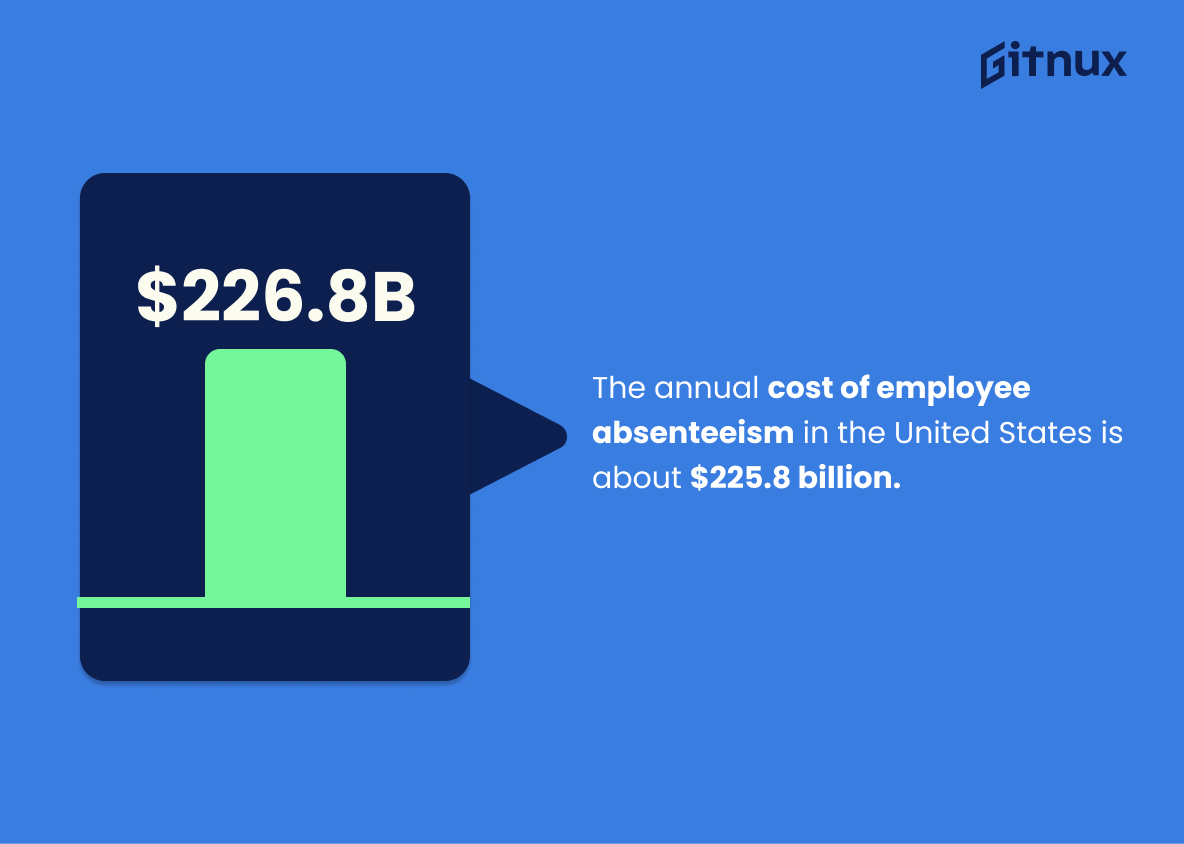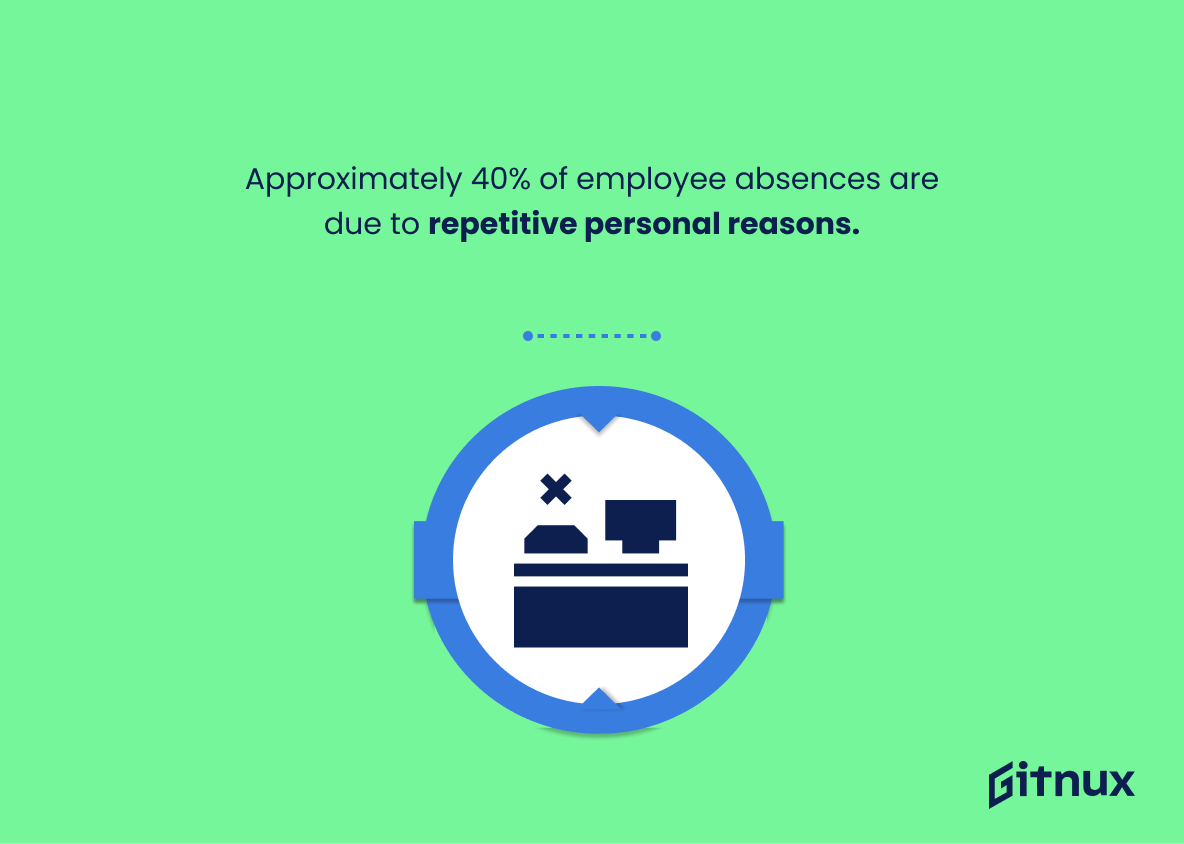Employee absenteeism is a major issue for many businesses, and it can have a huge impact on productivity and morale. In this blog post, we’ll take a look at some of the latest statistics on employee absenteeism, as well as some strategies for reducing absenteeism in the workplace.
We’ll also discuss the potential costs associated with absenteeism and how employers can mitigate them. Finally, we’ll provide some tips for employers on how to encourage employees to be more present and engaged in the workplace. So, let’s dive in and explore the world of employee absenteeism.
Employee Absenteeism: The Most Important Statistics
The overall absenteeism rate for workers in management, professional, and related occupations in 2022 was 3.6%, with 2.6% of absences due to illness and injury. Similarly, for workers in professional and related occupations, the absenteeism rate was 3.5%, with 2.4% of it being for illness and injury.
The overall absenteeism rate in the Wholesale and Retail Trade industry in 2022 was 3.9%, with 2.9% being due to illness and injury and the retail trade sector having a slightly higher rate of 4.0%.
Employee Absenteeism: Statistics Overview
The highest peak in health-related absenteeism during the 2021 to 2022 flu season occurred in January, resulting in a five percent absence rate for full-time workers in the United States.
This highlights the potential impact of health-related absences on the workforce. It also provides insight into the potential costs associated with such absences and the need for employers to plan for and manage them.
The data indicates that women report higher rates of health-related absenteeism than men, with a 6.14% absence rate in January compared to men’s 4.77%.
This highlights the need for employers to be aware of the gender differences in absenteeism and to take steps to address any disparities.
During the 2021-2022 flu season, health-related absenteeism in the professional and business services industry was significantly higher than expected, with the highest rate in January at 4.23%.
Employee absenteeism due to health-related issues is a significant problem in the professional and business services industry, and that employers should take steps to address this issue.
The overall absenteeism rate for workers in management, professional, and related occupations in 2022 was 3.6%, with 2.6% of absences due to illness and injury. Similarly, for workers in professional and related occupations, the absenteeism rate was 3.5%, with 2.4% of it being for illness and injury.
This provides insight into the prevalence of absenteeism in the workplace, which can help employers develop strategies to reduce absenteeism and improve employee productivity.
The data shows that health-related workplace absenteeism in the educational and health services industry was higher than expected in September and May 2022.
This indicates that employee absenteeism is a growing issue in this industry and should be addressed.
Healthcare practitioners and technical occupations had an absenteeism rate of 4.1%, with 2.8% of it being due to illness and injury, while education, training, and library occupations had an absenteeism rate of 3.9%, with 2.7% of it being for illness and injury.
This provides an indication of the rate of absenteeism in different occupations. This information can help employers and policy makers better understand the causes of absenteeism and develop strategies to reduce it.
Health-related absenteeism among full-time workers in the financial activities industry during the 2021-2022 flu season was lower than expected.
Health-related absenteeism is not higher than expected, which is beneficial for employers. This means that employers can plan accordingly and have a better understanding of how many employees may be absent due to health-related issues.
This data can also be used to inform employers of any necessary changes that may need to be made in order to accommodate for any potential absences.
The absenteeism rate for workers in Business and Financial Operations occupations in 2022 was 2.9%, with 1.9% of it being due to illness and injury.
This provides insight into the rate of absenteeism in the workforce, which can help employers and organizations to better understand the impact of employee absences on their operations.
Additionally, it can help to inform decisions about how to best manage absenteeism in the workplace.
The data indicates that health-related workplace absenteeism in the wholesale and retail trade industry was higher than expected in 7 out of 12 months during the 2021-2022 flu season.
This data is important because it shows that employee absenteeism is a significant issue in the wholesale and retail trade industry, and it is important for employers to take steps to reduce absenteeism in order to maintain productivity and profitability.
The overall absenteeism rate in the Wholesale and Retail Trade industry in 2022 was 3.9%, with 2.9% being due to illness and injury and the retail trade sector having a slightly higher rate of 4.0%.
This data is important because it provides insight into the overall absenteeism rate in the Wholesale and Retail Trade industry, which can be used to inform decisions about staffing, scheduling, and other operational decisions.
The annual cost of employee absenteeism in the United States is about $225.8 billion.
This is a staggering amount of money that could be used to invest in other areas of the business, such as employee training and development, or to increase wages and benefits. This statistic serves as a powerful reminder of the importance of addressing employee absenteeism in order to ensure the long-term success of any business.
Approximately 40% of employee absences are due to repetitive personal reasons.
This highlights the importance of understanding the underlying causes of absenteeism in order to effectively address the issue. Knowing that a significant portion of absences are due to personal reasons can help employers develop strategies to reduce the number of absences due to these causes.
In 2019, the absenteeism rate in the United States was 2.9%.
By understanding the absenteeism rate, employers can better plan for staffing needs and ensure that their employees are able to take the necessary time off when needed. Additionally, this statistic can help employers identify potential issues with employee morale or engagement, as well as any potential issues with the workplace environment that may be causing employees to miss work.
Unscheduled absences can cost employers 35% of base payroll.
This figure serves as a stark reminder of the importance of addressing absenteeism in the workplace.
Full-time employees miss an average of 3.9 days of work per year due to absenteeism.
This highlights the amount of time that is lost due to employees not being present, which can have a significant effect on productivity and morale. It is an important statistic to consider when discussing employee absenteeism, as it provides a tangible measure of the impact it can have on a business.
The average cost of absenteeism per employee is $1,685 per year.
This highlights the importance of having a system in place to monitor and manage employee absences, as the costs can quickly add up.
28% of employees report feeling overworked as a leading cause of unscheduled absences.
This is a clear sign that employers need to take a closer look at their work environment and make sure that their employees are not feeling overwhelmed and overworked.
In 2019, the absenteeism rate for female workers was 3.2% while the rate for male workers was 2.6%.
This disparity could be indicative of a larger issue, such as gender-based discrimination or unequal access to resources, and should be further investigated.
Employees are more likely to be absent on Mondays and Fridays.
This could be indicative of a lack of motivation or engagement in the workplace, or it could be a sign of employees feeling overworked and needing a break. Understanding this pattern of absenteeism can help employers identify potential issues and take steps to address them.
In the EU, mental illness accounted for 14% of lost workdays.
This highlights the need for employers to take proactive steps to ensure their employees are supported in managing their mental health, as well as providing access to resources and support for those who need it.
45% of companies reported increased absenteeism due to obesity.
This highlights the need for employers to take proactive steps to address the issue of obesity in the workplace, as it can have a significant effect on employee attendance. It also serves as a warning to employers that they should be aware of the potential for increased absenteeism due to obesity, and take steps to mitigate it.
Annually, absenteeism due to lower back pain costs companies approximately $7.4 billion in lost productivity.
This highlights the importance of taking proactive steps to reduce the amount of lost productivity associated with this issue. By investing in preventative measures such as ergonomic furniture, regular stretching exercises, and employee education, companies can help to reduce the amount of money lost due to absenteeism.
Conclusion
In conclusion, employee absenteeism is a major issue for organizations and can have a significant impact on the bottom line. It is important for employers to understand the causes of employee absenteeism and take steps to reduce it.
By implementing strategies such as flexible working arrangements, improved communication, and better management of employee health and wellbeing, organizations can reduce absenteeism and create a more productive and engaged workforce.
References
1 – https://www.statista.com/statistics/1259414/health-related-workplace-absenteeism-full-time-us-workers/
2 – https://www.statista.com/statistics/1260535/health-related-workplace-absenteeism-full-time-us-workers-by-gender/
3 – https://www.statista.com/statistics/1260678/health-related-absenteeism-in-professional-and-business-services-industry-by-month/
4 – https://www.bls.gov/cps/cpsaat47.htm
5 – https://www.statista.com/statistics/1260541/health-related-absenteeism-in-educational-and-health-industry-by-month/
6 – https://www.bls.gov/cps/cpsaat47.htm
7 – https://www.statista.com/statistics/1260669/health-related-absenteeism-in-financial-activities-industry-by-month/
8 – https://www.bls.gov/cps/cpsaat47.htm
9 – https://www.statista.com/statistics/1260685/health-related-absenteeism-in-wholesale-and-retail-trade-industry/
10 – https://www.bls.gov/cps/cpsaat47.htm
11 – https://www.cipd.co.uk
12 – https://www.cdcfoundation.org
13 – https://pubmed.ncbi.nlm.nih.gov
14 – https://www.bls.gov
15 – https://www.opm.gov
16 – https://www.rand.org
17 – https://www.ifebp.org
18 – https://www.forbes.com
19 – https://www.businessinsurance.com
20 – https://www.ncbi.nlm.nih.gov

